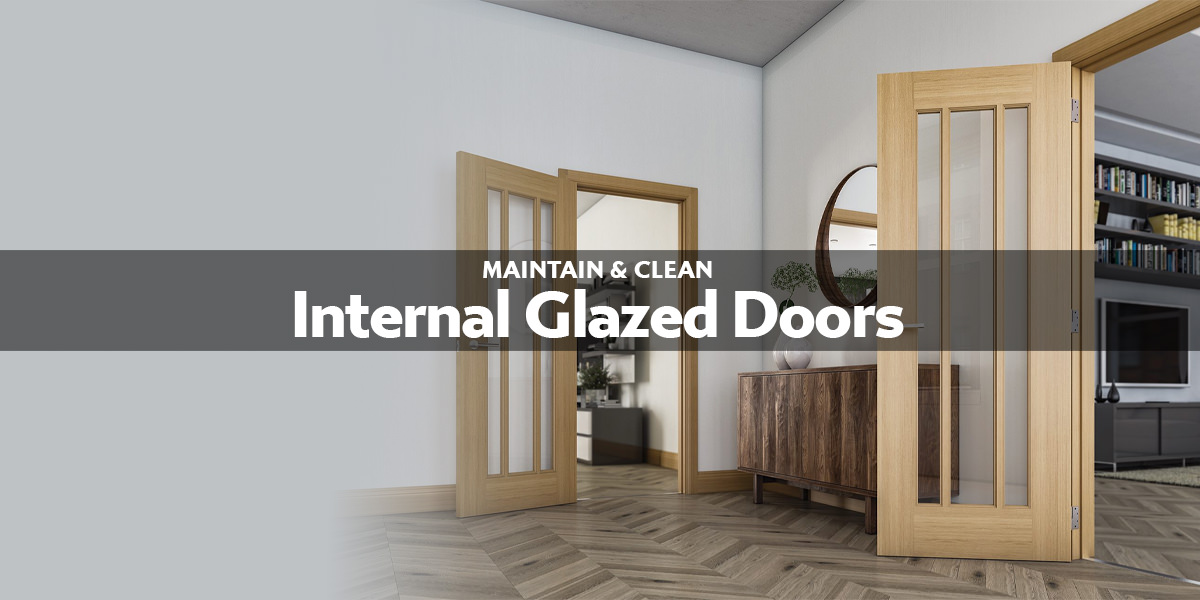
Introduction: Why Internal Glazed Doors Are Popular
Internal glazed doors have become a favourite choice for homeowners and businesses. Their sleek design, combined with the ability to let natural light flow between rooms, creates brighter, more inviting spaces. Whether in homes, offices, or commercial buildings, these doors add style and functionality, striking the perfect balance between openness and privacy.
Their versatility makes internal glazed doors suitable for almost any decor. However, regular cleaning and maintenance are essential to keep them looking their best.
This guide will show you how to care for internal glazed doors, ensuring they remain as functional and beautiful as the day they were installed.
Understanding Internal Glazed Doors
What Are Internal Glazed Doors?
These doors feature glass panels integrated into their design. These panels allow light to flow through rooms, enhancing the feeling of space. Whether fully glazed or partially glazed with smaller panes, these doors offer an elegant solution for modern and traditional interiors.
Glazed doors come in various styles, from minimalist to intricate. They combine the solidity of materials like wood or composite frames with the lightness and visual appeal of glass.
Common Materials
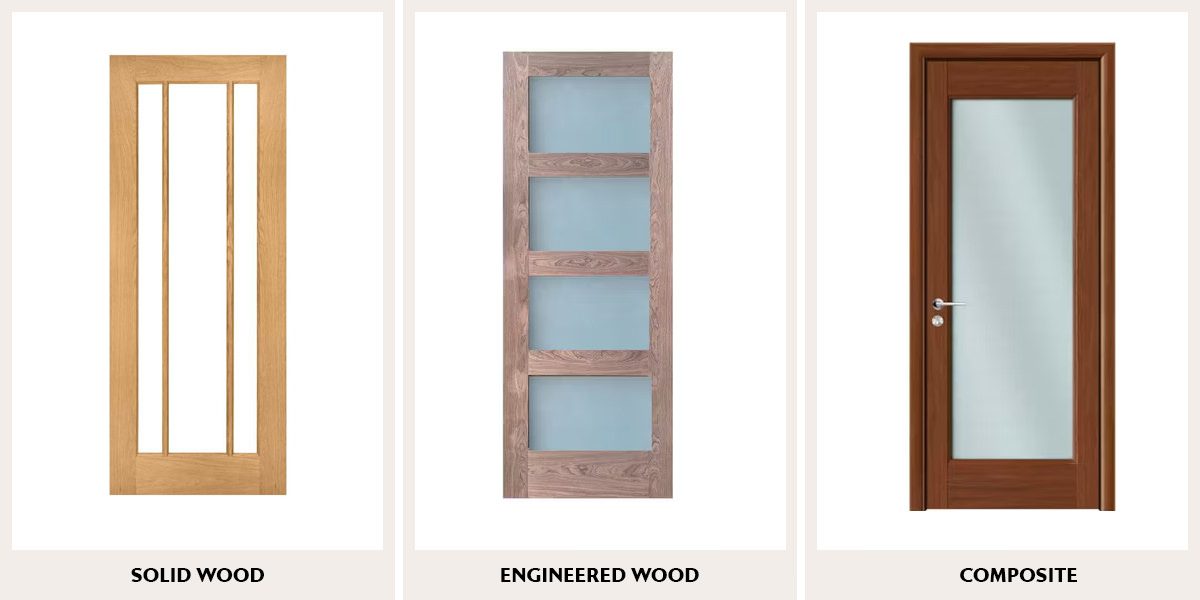
The most common materials for internal glazed doors include solid wood, engineered wood, and composite materials. Wooden frames, such as oak or pine, offer natural beauty and durability, while engineered wood provides a cost-effective, stable alternative that resists warping.
The glass can vary in type, including clear, frosted, or textured options. Many doors feature tempered safety glass, which is tougher and safer in the event of breakage.
Glazing can also include energy-efficient coatings that improve insulation while maintaining a polished look.
Types of Internal Glazed Doors
Full-Glazed Doors
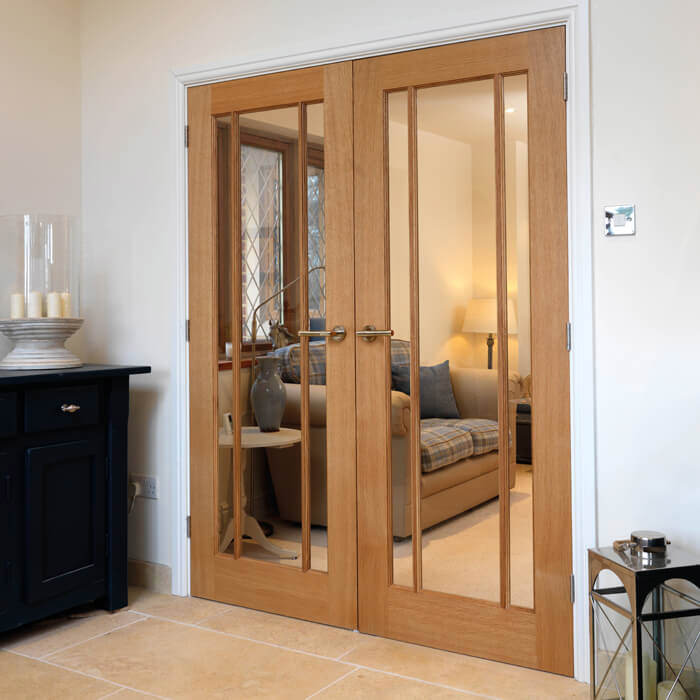
Full-glazed doors feature large glass panels that cover most of the door's surface. They're ideal for maximising light flow and creating an open, airy feel. Perfect for spaces like living rooms or dining areas, these doors work beautifully in modern interiors where visibility and brightness are priorities.
Clear Glass Doors
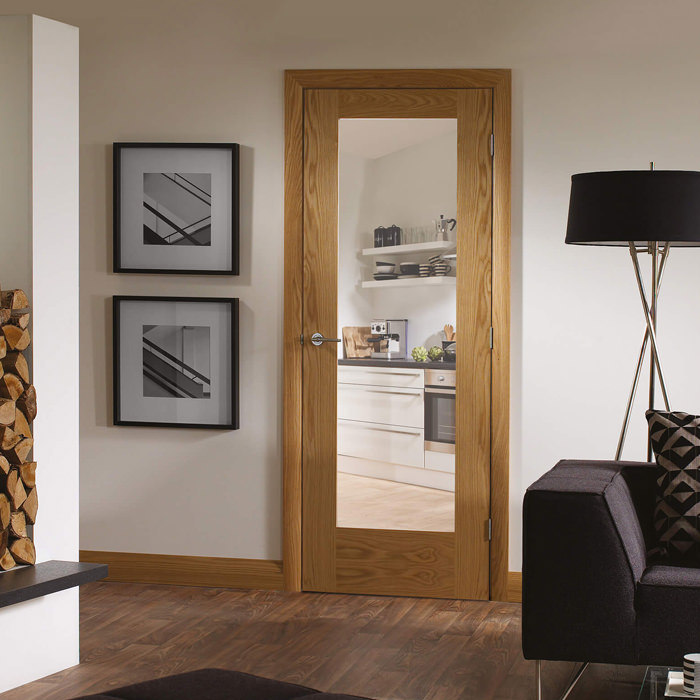
Clear glass doors are designed to provide unobstructed views while allowing light to pass through freely. These doors suit spaces where transparency is important, such as offices, hallways, or connecting rooms in homes. They brighten interiors without compromising on aesthetics.
Frosted Glass Doors
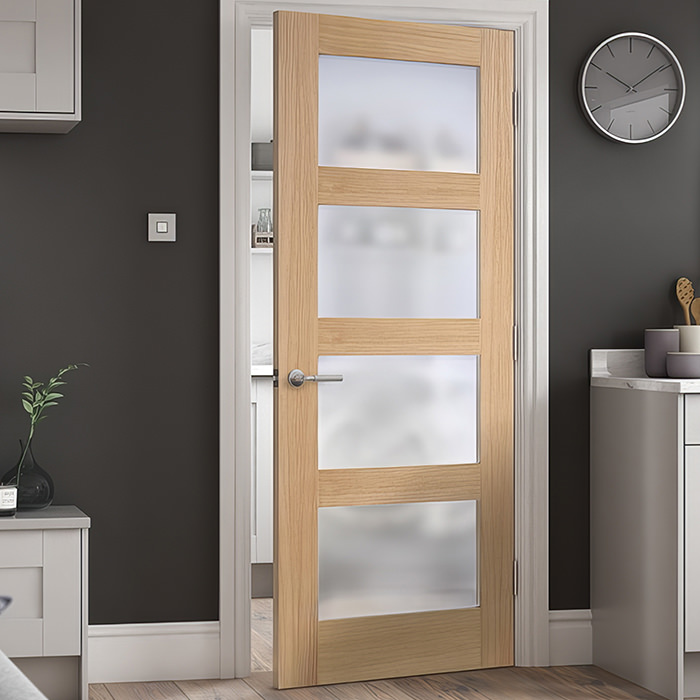
Frosted glass doors feature opaque glass panels that diffuse light while maintaining privacy. These are particularly suited for bathrooms, home offices, or bedrooms where seclusion is needed without sacrificing natural light. Frosted doors combine functionality with a soft, stylish appearance.
Classic Styles
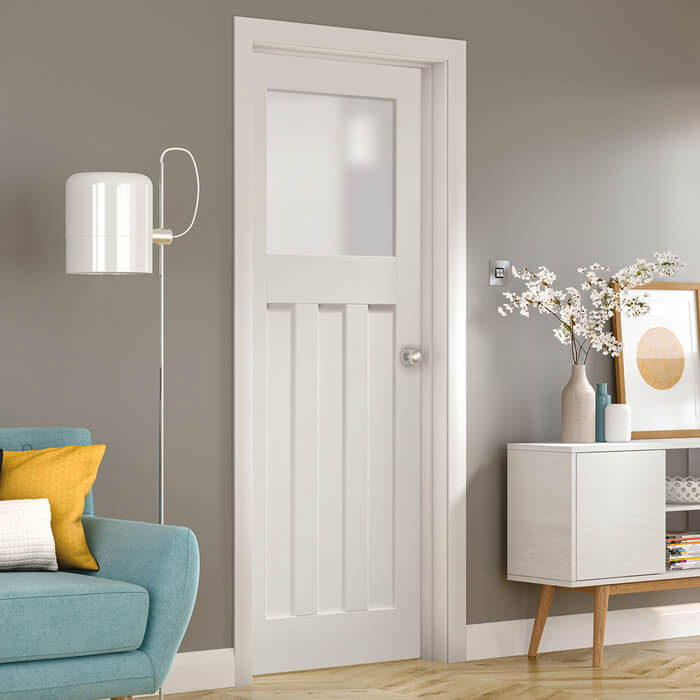
Classic glazed doors often feature traditional panelled designs with clear or frosted glass inserts. These doors add timeless appeal to period homes and formal interiors, combining decorative elegance with practical glazing.
Modern Innovations
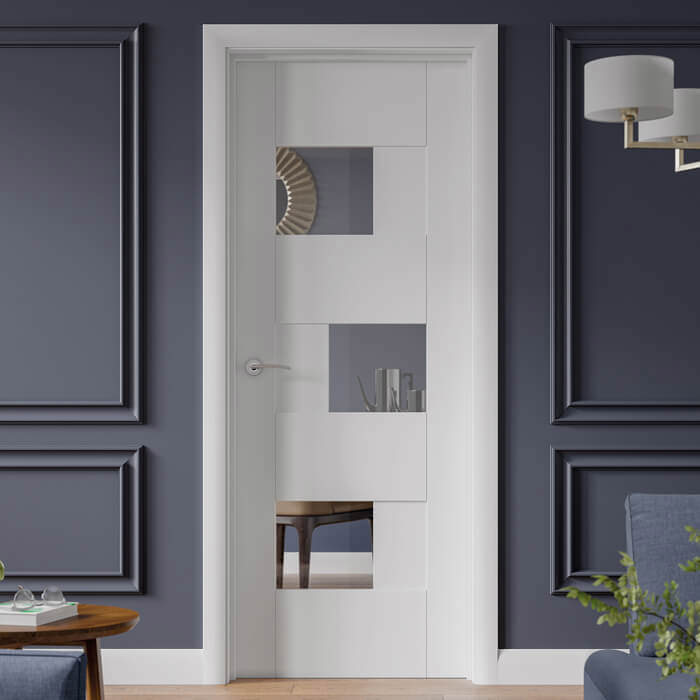
Modern designs focus on minimalism, with slim frames, large glass surfaces, and innovative glazing options. Features like tinted or energy-efficient glass, along with concealed hinges, give these doors a sleek, contemporary look suitable for modern homes and offices.
Internal Glazed Door Buying Guide
Key Factors to Consider
When choosing internal glazed doors, think about the purpose of the room and your style preferences.
Full-glazed doors are ideal for bright, open spaces, while frosted glass works best for privacy. Consider the durability of the door frame, especially for high-traffic areas, and choose materials like engineered wood or hardwood for longevity.
Safety is also important-opt for doors with tempered glass, which reduces the risk of injury if the glass breaks.
Finally, think about energy efficiency, as modern glazing options can help reduce heat loss while maintaining a stylish finish.
Cost Comparison by Material and Style
The cost of these doors varies based on materials, style, and glazing options.
Doors with solid wood frames or premium finishes tend to be more expensive, while engineered wood and composite options are more budget-friendly. Full-glazed doors or those with advanced glazing (like tinted or energy-efficient glass) come at a higher price but offer greater functionality and style.
Investing in high-quality glazed doors ensures long-term value, especially in busy homes or offices where durability and performance matter.
Maintenance Tips for Internal Glazed Doors
Cleaning and Care
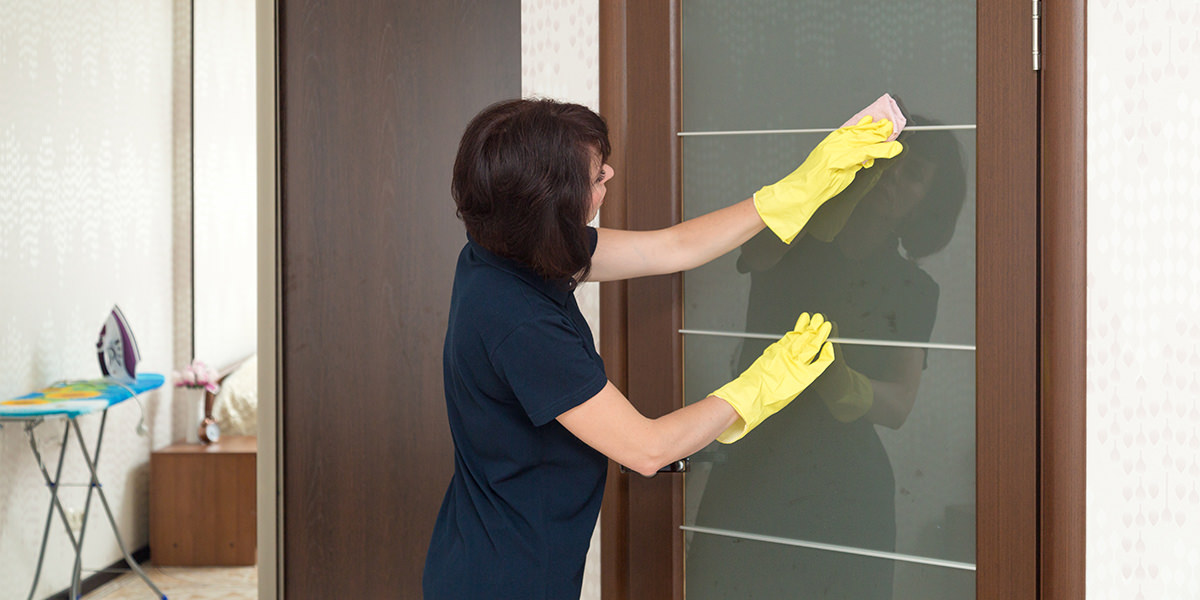
Regular cleaning is essential to maintain the appearance and functionality of these doors.
Start by removing surface dust and dirt from the glass panels and frames using a soft microfiber cloth or a vacuum with a brush attachment. For wooden or composite frames, use a mild soap and warm water solution, but be careful not to oversaturate the material, as excessive moisture can cause warping or damage.
For glass panels, mix water with a small amount of white vinegar or use a commercial glass cleaner. Spray the cleaner onto a cloth rather than directly on the glass to prevent drips from seeping into the frame. For frosted or textured glass, clean gently in circular motions to remove dirt from any grooves or patterns. Buff the surface with a dry, lint-free cloth to achieve a streak-free shine.
Pay attention to any metal or polished hardware, like handles or hinges. Wipe these down regularly with a damp cloth and use a non-abrasive polish for stainless steel or brass finishes to restore their shine.
By cleaning your glazed doors regularly, you'll maintain their clarity, prevent the build-up of grime, and keep them looking fresh for years to come.
Handling Wear and Tear
Over time, even the most durable internal glazed doors can experience wear and tear, especially in high-traffic areas.
Start by inspecting the glass panels for scratches, chips, or cracks. Minor surface scratches can be addressed using a specialist glass polishing kit, but larger cracks or chips should be handled by a professional to maintain the door's safety and functionality.
The frames are also prone to scuffs, dents, or scratches. Light marks on wooden frames can be sanded down and refinished with a suitable paint, stain, or varnish to match the original look. If you're working with composite materials, touch-up pens or fillers are effective for concealing damage.
Check the door's hardware, including hinges, handles, and locks, for signs of loosening or misalignment. Tighten any loose screws promptly and apply a silicone-based lubricant to hinges to eliminate squeaking and ensure smooth operation. Avoid oil-based products, as they can attract dust or leave a residue that compromises the door's finish.
Finally, assess how well the door fits in its frame. Misalignment can cause uneven wear or prevent the door from closing correctly. Addressing issues early, whether through minor adjustments or professional repairs, will prevent further damage and ensure your glazed doors remain functional and visually appealing.
Energy Efficiency and Sustainability
Properly maintained glazed doors can improve energy efficiency by allowing light to flow through spaces, reducing the need for artificial lighting. If your doors include energy-efficient glass, they can also help insulate rooms, keeping temperatures stable and lowering energy bills.
In terms of sustainability, maintaining your doors reduces the need for replacements, which minimises waste. Opting for high-quality doors with responsibly sourced wood or recycled materials further supports eco-friendly choices.
Conclusion: Finding the Perfect Internal Glazed Doors
Internal glazed doors offer a stylish and practical way to brighten interiors, balance privacy, and add character to homes and offices.
Whether you prefer full-glazed, frosted, or classic designs, these doors can transform any space while providing long-lasting functionality. And, with regular care and attention, you can ensure they remain a standout feature in your interiors for years to come.
Related Articles
Category
Study & ResearchPosted On
30th October 2023



